Yongkang Beef Noodles, a Taipei Delicacy (Part 1) 台灣的美食:永康牛肉麵 (甲)
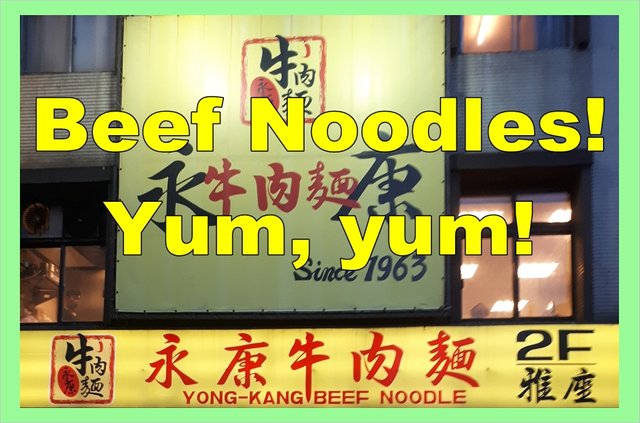
This Taipei must-visit serves variations of its spicy specialty, plus a few lesser-known Sichuan dishes.
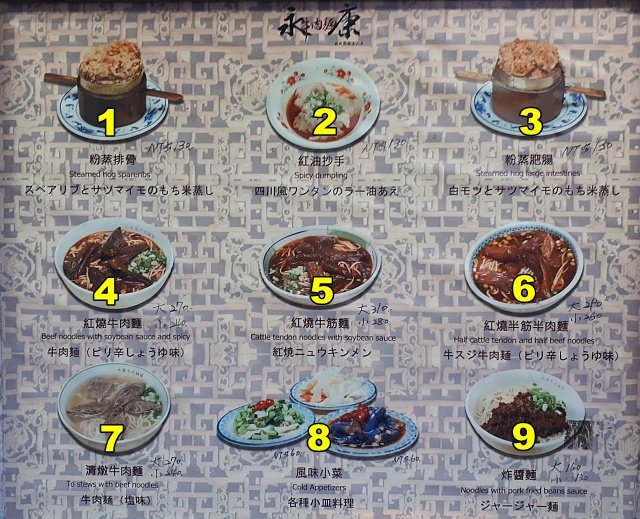
[ Yongkang’s Simple Menu ]
An explanation (QR codes for curious cooks, corrected translations and pronunciations) of its 9-item menu follows below:
(1)** The first item is 粉蒸排骨 fěnzhēng páigǔ / FeeNJENG PAIrGuu “Pork ribs steamed in spicy rice flour”. **The rice flour is a mixture of rice, chili peppers and Sichuan peppercorns (https://en.wikipedia.org/wiki/Sichuan_pepper), a spice that gives any dish a tangy bite.
粉 fěn/ FeeN “[literally] powder, rice flour”
蒸 zhēng / JENG “to cook something in steam (traditionally in a bamboo steamer)”
排 pái / PAIr “a row [things arranged in a line]”
骨 gǔ / Guu “bones”, so 排骨 páigǔ / pairguu are ribs (a series of chest bones arranged in a row)
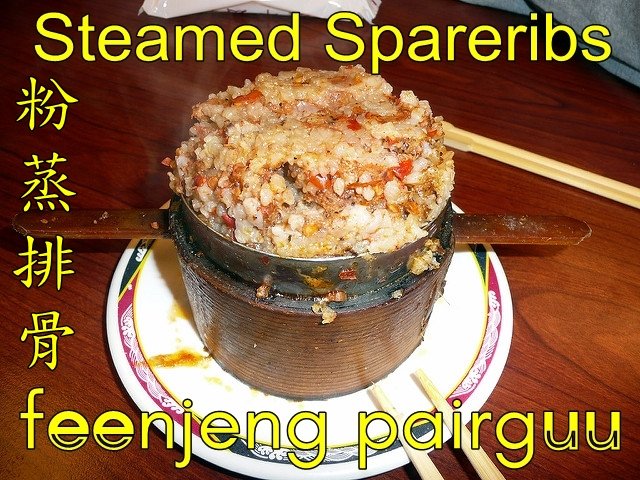
[ *Steamed Spareribs With Rice Flour @ Yong Kang Beef Noodles 永康牛肉麵的粉蒸排骨, CC-BY-NC-SA,Shih-PeiChang
More information here: https://tinyurl.com/feenjeng-pairguu
(2) Next is a spicy delicacy, 紅油抄手 hóngyóu chāoshǒu # HOrNGyOU CHAUSHooU “[literally] folded arms in red oil = Sichuan-style spicy wontons.” The menu incorrectly identifies 抄手 chāoshǒu / chaushoou as dumplings, which are usually solid balls. The closest equivalent in English are wontons 雲吞 (known as 餛飩 “húntun / HwEN.TwEN* in Mandarin), a popular item in Cantonese cuisine well known in Chinese restaurants in the US: https://en.wikipedia.org/wiki/Wonton#Sichuan_cuisine
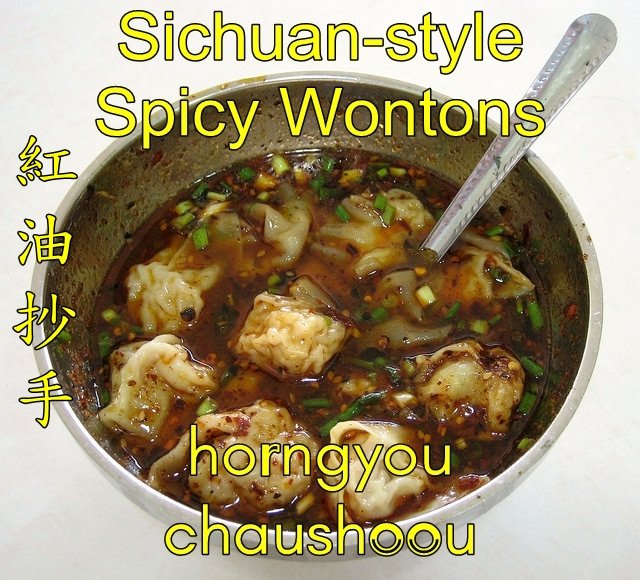
[ Spicy and Numbing Wontons , CC-BY Prince Roy]
(3) Item 3 is 粉蒸肥腸 fěnzhēng féicháng # FeeNJENG FEIrCHArNG, Chitterlings steamed in spicy rice flour (a variation of item 1).
In China, 肥腸 féicháng # FEIrCHArNG "chitterlings" /ˈʧɩtlɩŋz/ don’t have the same cultural connotations of poor people's food as they do in the cultures of the southern US and other countries: https://en.wikipedia.org/wiki/Chitterlings#United_States
Summary of First Three Items
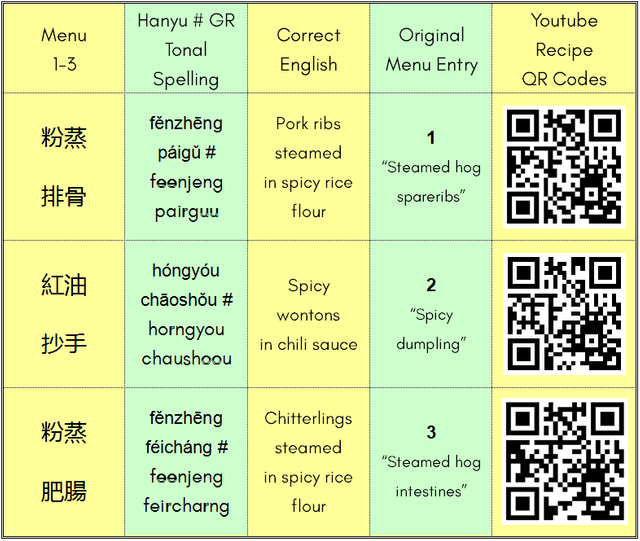
[Yongkang Beef Noodles, first three menu items]
Romanization Side Note
In the romanizations above, the romanization before the slashes is Hanyu Pinyin [1958 Chinese government standard]. The romanization after the slashes is GR Tonal Spelling [1928 Chinese government standard], a unique system that usually shows tones via mnemonic, dual-use letters (vowels and tones marked simultaneously). For clarity in this post, lower case is used for tone letters (when no semivowel is available, -r = rising tone).
Example: double vowels, such as -ee- and -uu- ( FeeN and Guu above) are 3rd tones, which are long syllables, much longer than the other three tones in Mandarin. Ask a Chinese friend to pronounce 粉 FeeN and 憤 FEnn “angry”: you will immediately hear the difference: ***FeeN *** is much longer than ***FEnn ***
Who I am:
https://steemit.com/introduceyourself/@wentong-syhhae/enthusiastic-intp-polyglot
Congratulations @wentong-syhhae! You have completed the following achievement on Steemit and have been rewarded with new badge(s) :
Click on the badge to view your Board of Honor.
If you no longer want to receive notifications, reply to this comment with the word
STOPResteemed your article. This article was resteemed because you are part of the New Steemians project. You can learn more about it here: https://steemit.com/introduceyourself/@gaman/new-steemians-project-launch